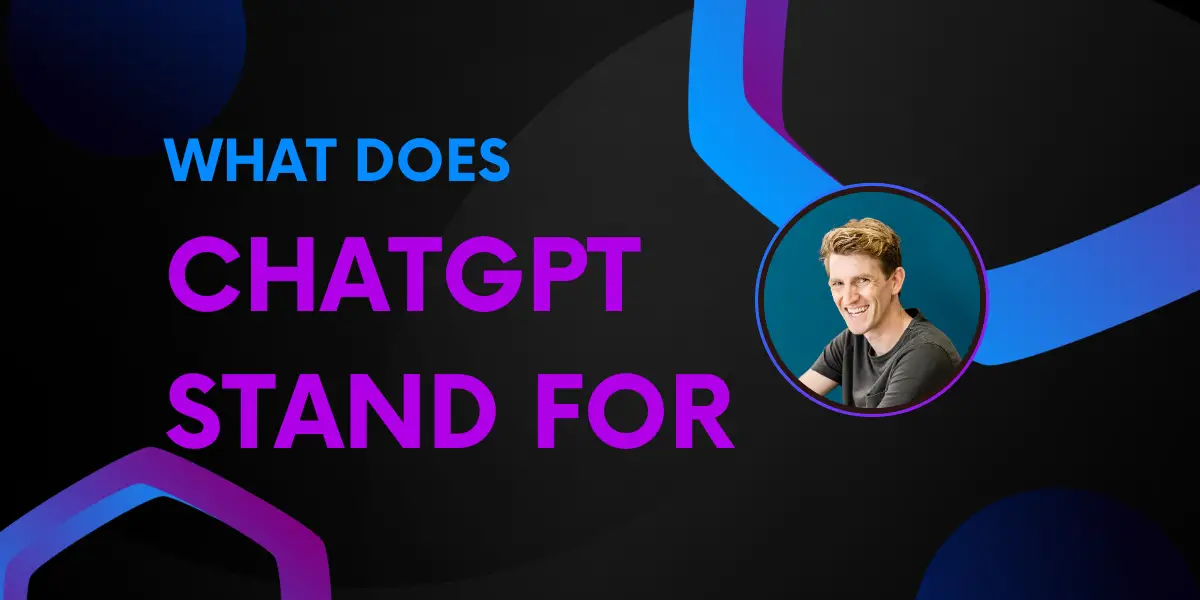Unraveling the AI Enigma: What Does ChatGPT Stand For?

In the rapidly evolving world of artificial intelligence (AI), new terminologies and acronyms are constantly emerging. One such term that has gained significant attention is “ChatGPT”. But what does ChatGPT stand for? And why is it important in the realm of AI? This article aims to demystify the term and delve into the significance of ChatGPT.
Table of Contents
What Does ChatGPT Stand For?
ChatGPT stands for Chat Generative Pre-training Transformer. It’s a software that uses advanced natural language processing techniques to engage in human-like dialogue. The term “ChatGPT” might sound technical, but each part of this acronym reveals a lot about the software’s purpose and functionality.
The Breakdown: Understanding What ChatGPT Stands For
To fully understand what ChatGPT stands for, let’s break down the term:
- Chat: This refers to the software’s primary function, which is to engage in dialogue with users. It’s designed to understand and respond to human language in a way that mimics natural human conversation.
- Generative: This term refers to the software’s ability to generate text. Using machine learning algorithms, ChatGPT can create human-like text based on the input it receives.
- Pre-training: This is a reference to the initial phase of training the AI, where it learns to predict the next word in a sentence by analyzing vast amounts of text data.
- Transformer: This term refers to the type of model that ChatGPT uses to process and generate text. Transformers are a type of model used in natural language processing that can handle long-range dependencies in text.
The Significance of ChatGPT
Now that we’ve understood what ChatGPT stands for, it’s important to recognize its significance in the field of AI. ChatGPT is not just a chatbot—it’s a sophisticated AI model that can generate human-like text, making it a powerful tool for various applications, from drafting emails to coding computer programs.
The Applications of ChatGPT
ChatGPT has a wide range of applications. It can be used to draft emails, write articles, generate code, and even compose music. It can also be used in education to create interactive learning experiences, in customer service to handle customer queries, and in entertainment to create engaging content.
The Future of ChatGPT
While ChatGPT has already made significant strides in the field of AI, it’s important to note that it’s still a work in progress. The software’s training data only goes up until 2021, and it relies on statistical patterns rather than a true understanding of human language. However, as AI technology continues to evolve, we can expect to see even more advanced versions of ChatGPT in the future.
The Challenges and Ethical Considerations
Despite its potential, ChatGPT also presents several challenges. These include the risk of misuse, the propagation of misinformation, and the potential for bias in its responses. It’s crucial that as we continue to develop and use technologies like ChatGPT, we also consider the ethical implications and work to mitigate these risks.
Conclusion
So, what does ChatGPT stand for? It’s more than just an acronym—it’s a symbol of the advancements in AI and the potential of machine learning. As we continue to explore the capabilities of ChatGPT, we can look forward to a future where AI can communicate more naturally and effectively with humans.
The title and content of this article belong to the original works of AITOOLMALL, and all rights belong to AITOOLMALL. Strongly condemn all plagiarism, unauthorized reprinting of the title and content of this article, and rewriting of this article using AI tools.

